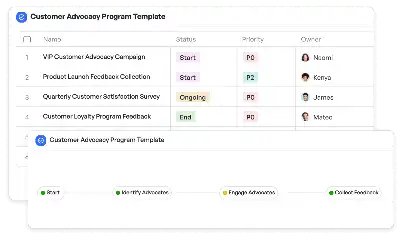Component Failure Rate Analysis
Achieve project success with the Component Failure Rate Analysis today!

What is Component Failure Rate Analysis?
Component Failure Rate Analysis is a critical process used to evaluate the reliability and durability of individual components within a system. This analysis is essential in industries such as automotive, aerospace, and manufacturing, where the failure of a single component can lead to significant operational disruptions or safety hazards. By systematically assessing failure rates, organizations can identify weak points, predict potential breakdowns, and implement preventive measures. For instance, in the automotive industry, analyzing the failure rate of brake systems ensures that vehicles meet safety standards and reduce the risk of accidents. This template provides a structured approach to collect data, calculate failure rates, and generate actionable insights, making it an indispensable tool for engineers and quality assurance teams.
Try this template now
Who is this Component Failure Rate Analysis Template for?
This template is designed for professionals and teams involved in quality assurance, reliability engineering, and maintenance planning. Typical users include mechanical engineers, quality control specialists, and project managers in industries like aerospace, automotive, and heavy machinery. For example, a reliability engineer in an aerospace company can use this template to analyze the failure rates of critical components such as turbines or landing gear. Similarly, a quality assurance team in a manufacturing plant can leverage this tool to monitor the durability of production line equipment. By catering to these roles, the template ensures that users have a comprehensive framework to address their specific needs and challenges.

Try this template now
Why use this Component Failure Rate Analysis?
The primary advantage of using this template lies in its ability to address the unique challenges of failure rate analysis. For instance, one common pain point is the lack of standardized methods for data collection and analysis, which can lead to inconsistent results. This template provides a clear structure for gathering and processing data, ensuring accuracy and reliability. Another challenge is the difficulty in identifying root causes of component failures. By offering detailed analysis tools, the template helps users pinpoint specific issues and implement targeted solutions. Additionally, the template facilitates effective communication of findings through well-organized reports, enabling stakeholders to make informed decisions. Whether it's improving product reliability or enhancing operational efficiency, this template is tailored to meet the demands of failure rate analysis in complex systems.

Try this template now
Get Started with the Component Failure Rate Analysis
Follow these simple steps to get started with Meegle templates:
1. Click 'Get this Free Template Now' to sign up for Meegle.
2. After signing up, you will be redirected to the Component Failure Rate Analysis. Click 'Use this Template' to create a version of this template in your workspace.
3. Customize the workflow and fields of the template to suit your specific needs.
4. Start using the template and experience the full potential of Meegle!
Try this template now
Free forever for teams up to 20!
The world’s #1 visualized project management tool
Powered by the next gen visual workflow engine




